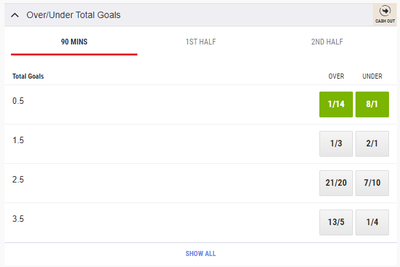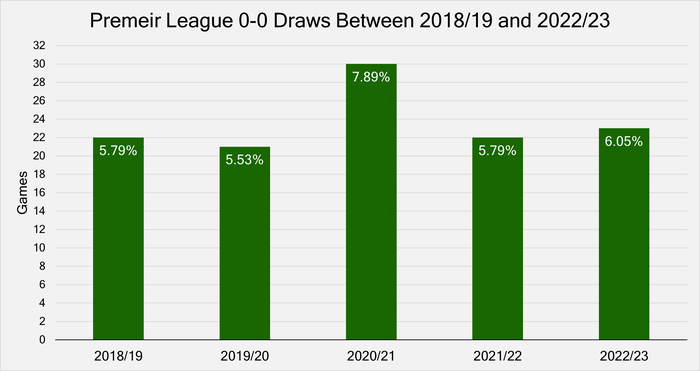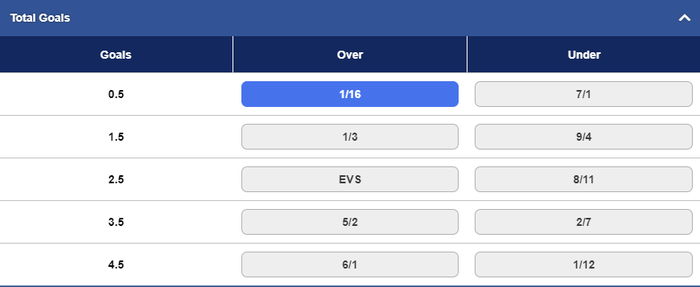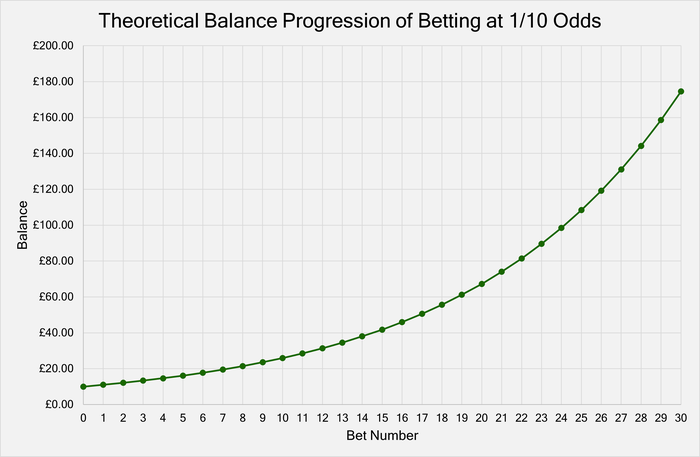 We have looked at bets similar to this elsewhere in our FAQs and so be sure to check out our articles on over/under 2.5 goals and over/under 1.5 goals. This type of market – backing over or under a certain number of goals – is offered by almost all football betting sites. Most will offer different “lines” or totals, as the number of goals is scored, ranging from 0.5, our focus here, right up to 5.5, 6.5 and even higher.
We have looked at bets similar to this elsewhere in our FAQs and so be sure to check out our articles on over/under 2.5 goals and over/under 1.5 goals. This type of market – backing over or under a certain number of goals – is offered by almost all football betting sites. Most will offer different “lines” or totals, as the number of goals is scored, ranging from 0.5, our focus here, right up to 5.5, 6.5 and even higher.
For the most thorough explanation of this market in general terms, our feature on over/under 2.5 goals is the place to go. This is because much of the information for the wider market is exactly the same whether you are looking at over 1.5, under 4.5 goals, or anything else. The bet fundamentally works in the same way and so rather than repeat ourselves we have provided the most detail in the over/under 2.5 goal article – because this is the most popular line for this type of wager.
What is Under/Over 0.5 Goals Football Betting?

Having said that the various goal lines work in much the same way, there is something a little different about under/over 0.5 goals. Perhaps it is fairer to say that under 0.5 in particular stands alone, for the fairly obvious reason that a bet on under 0.5 goals is a punt that the game won’t see a single goal. So whilst all the other options and lines are bets there will be goals in the game, this one is actually a wager on a clash ending 0-0.
Clearly this is not a punt that too many bettors will be attracted to for a range of reasons. First of all, relatively few games end 0-0. (We’ll look at how often they do end goalless shortly.) Second, though, it is not an enjoyable bet to make and goes against the instincts of many football fans and supporters.
It is human nature to bet in hope of something happening (goals in this case), rather than in fear of an event occurring. It is not a pleasurable experience to watch a match and worry that your bet can be downed at any moment, when the ball is at either end of the pitch! No punter wants to spice up a game with a bet and then spend 90 minutes wishing for the ball to never leave the middle third and just be aimlessly passed around by the defenders!
No Goalscorer May be a Better Bet!

If you are working purely from a value perspective, betting on a game ending without a goal can be a good option. Indeed, precisely because it is so unpopular with punters, backing under 0.5 goals can offer odds that are better than they ‘should’ be – in other words, it could well be a value bet.
The market as a whole is far more weighted towards people backing goals of some form and this means that the bookies have to shape their odds accordingly. The 0-0 score is almost always the most profitable result for a bookie, even though the volume of money backing goals forces the price of under 0.5 up, often above where it really should be based on a cold-headed analysis of the match.
However, if you do think a game is going to end 0-0, backing under 0.5 goals is far from the only option you have. Strange as it may sound, this exact outcome is covered by a number of different bets and markets. It will be even more surprising to some that the odds and exact terms for these various options can differ and this means that betting on under 0.5 goals may not be the best option.
The different markets and selections that all win if the game ends 0-0 include:
- Under/Over 0.5 goals – under 0.5 goals
- Correct score – 0-0
- First goalscorer – no goalscorer
- Last goalscorer – no goalscorer
- Anytime goalscorer – no goalscorer
- Total goals exact – zero
- Team to score first – no goals
Note that this list is not exhaustive either and there may be further bets that effectively cover 0-0. First of all, if you absolutely want to give yourself the best chance of beating the bookies it is important to check these different markets to see which offers the best price. Getting the very best possible odds for all of your bets is the only guaranteed way to improve your overall returns.
However, it is not just the odds of the different markets that can vary but also the mechanics of the bet. All of the options above win if the game ends 0-0 but bets on first, last or anytime goalscorer also win if the only goal (or even goals) in a game, is an own goal. In these markets, own goals do not count, so if the match is 1–0 thanks to a goal scored at the wrong end of the pitch, backing no goalscorer will win. In contrast, 1-0 thanks to an own goal is a losing bet in all of the other markets.
First, last and anytime all settle in the same way with regards to no goalscorer selections and own goals, so as long as the price for no scorer is the same it doesn’t matter which you choose. Even if the game is 5-5 and if, somehow, all 10 strikes were own goals, no goalscorer would still be a winning bet. So, strange as it may seem, both over 9.5 goals and no goalscorer bets would be winners on the same clash!
This means that if you can back no goalscorer at the same or better odds as the best-priced alternative, you should always go for first, last, or anytime to cover 0-0. Games that only see own goals are rare but they are far from unheard of. If you backed no goalscorer 100 times per season you might only win one extra bet compared to a friend who plumped for 0-0 (or under 0.5 goals). However, with these markets usually paying out at odds of between 7/1 and 12/1, that one win would still be rewarding. And you’d have the satisfaction of knowing you’d beaten those plumping for under 0.5 goals.
How Often Do Games End 0-0?
OK, so now we have highlighted why you might want to bet on under 0.5 goals because by going against the grain you may be able to snaffle some value. We’ve also looked at how different markets could get you bigger odds and/or more chances to win. But just how often do wagers on under 0.5 goals win?
Note that the stats that follow are based solely on games that end 0-0 and where under 0.5 goals would be a winner. A very small number of extra bets could be won were you able to get the same, or better, odds on no goalscorer.

Of course, 0-0 stats will vary by season and between different leagues, with bigger changes seen over different eras, for example when major rule changes such as the introduction of offside have been implemented. However, as a very general rule, in modern times you are looking at around one in 14 games finishing 0-0. Put another way, in the Premier League, you might see around two matches finish scoreless every three weeks (three rounds of 10 games). Put yet another way, under 0.5 goals wins between 6% and 8% of the time.
During the most recent EPL campaign, in 2022/23, there were 23 0-0s, equating to just 6.05% of the 380 fixtures. The campaign before saw even fewer bore draws, with just 22, or 5.79%. However, go back another year and there were 30, or 7.89%. If we look solely at the big five European leagues (the top flights of English, Spanish, German, Italian and French football), we see a similar picture.
The percentage of under 0.5-goal games rarely strays higher than 7% and rarely goes below 5%, with an average figure in recent times of slightly below 7%. However, if we widen our horizons and look at some smaller leagues, we see that 0-0s occur far more frequently. For example, Iran’s Pro League, the Zambian Super League and Egyptian Premier League are all seeing more than 15% of their games end without a goal in their most recent campaigns.
However, most punters tend to bet on the bigger leagues, and whilst there can be some cracking value unearthed in the game’s less popular football competitions, betting on these can often see your account limited quite quickly. So, returning to the Premier League, La Liga and so on, if under 0.5 goals bets win around 6.5% of the time, that means over 0.5 goals bets win well over 90% of the time.
So, is Over 0.5 Goals a Good Bet?

A bet that wins between 92% and 94% of the time sounds like the stuff that dreams are made of. Indeed, if you are looking for a near-banker, to either qualify for a free bet, complete some bonus wagering, or just add interest to a game without taking on too much risk, over 0.5 goals can be a good option.
There are two caveats to this. First, if you are trying to use or qualify for a free bet, check that the over 0.5 goals bet offers odds that are above the minimum odds outlined in the terms. Second, be very aware that such bets can lose. Can, do and – at some point – will. And of course, the bookies not being mugs, the odds offered on these sorts of ‘banker’ wagers are such that whilst you might get 12 wins in a row, that 13th bet that loses will mean that overall you are down and the bookmaker is up.
Don’t be Sucked in by a Terrible Betting ‘System’

There are countless ‘betting systems‘ and ‘staking plans’ littered across the less sensible areas of the internet that promise much and deliver far less. From the Martingale in roulette (or even used on sports betting), to laying the favourite in a horse race, all of these so-called systems fail and should be, at the very, very least, treated with extreme caution.
Never pay for such ideas and stick to the maxim that if something seems too good to be true, it almost certainly is. If you can’t see the flaw in a betting scheme, ask a friend, or even give it a try using very small stakes and for a long time. But when it comes to the over 0.5 goals system, you don’t need to do any of these, you can simply trust us: it doesn’t work!
In simple terms, the over 0.5 goals betting strategy just requires you to keep backing this market and allowing your stake to roll over. As said, in 2022/23, there were only 23 games that ended 0-0, meaning that 357 didn’t. So in theory, finding winners is easy. And in practice too. However, as touched on above, the odds for this market, as with all markets, tend to reflect that. So typical odds for over 0.5 goals tend to be between 1/6 and 1/20, though it is not uncommon to see prices of 1/33 or even shorter in matches where goals are highly likely.
This betting strategy, and we really do use the term loosely, is based on the idea that you can easily land a lengthy sequence of winners. With 357 of 380 games in the most recent complete PL season going the way of over 0.5 goals, on the face of it, this seems sound enough reasoning. Whilst the odds for each selection are short, all heavily odds-on, these small winnings can soon add up in the same way they do with an acca. If you can hit a good run of winners – easy as these are all bankers, right?! – then, according to this strategy, you can soon turn a modest starting stake into a huge win.

Let us imagine that you start with a bankroll of £10 and land your first winner at odds of 1/10. You now have £11 and this rolls over onto the next bet, let us imagine at odds of 1/8. An over 0.5 goals bet priced at such relatively big odds is one where the bookies feel a 0-0 is a distinct possibility, even though still a huge outsider. Nonetheless, the game ends 1-1 and your £11 is now worth £12.38. Feeling buoyed, you plump for a real ‘outsider’ at just 1/6, £12.38 at these odds yielding a win of £2.06, thus taking your balance to £14.44.
In just three bets you have won £4.44, a modest return in monetary terms but a handsome 44.4% – far better than any bank would pay you. Even though the last game was only 1-0 thanks to an injury time winner, you have won three bets in a row and are feeling pretty confident. It is easy for punters to trick themselves that they are onto a winning system and begin to believe that there is hardly any threats involved.
 You keep betting in this way, selecting matches where you firmly believe there will be at least one goal but avoiding the really, really short odds because a 1/33 shot just won’t add much to your balance. Sticking to picks between 1/6 and 1/20, you manage to land five more winners and your next bet, again for your whole balance, is just over £25. You have now won eight bets in a row and your £25 goes on a 1/10 shot to return just over £27.50 if it wins.
You keep betting in this way, selecting matches where you firmly believe there will be at least one goal but avoiding the really, really short odds because a 1/33 shot just won’t add much to your balance. Sticking to picks between 1/6 and 1/20, you manage to land five more winners and your next bet, again for your whole balance, is just over £25. You have now won eight bets in a row and your £25 goes on a 1/10 shot to return just over £27.50 if it wins.
However, a selection at 1/10, banker though it may be in your head, will lose around 10% to 13% of the time, allowing for the profit margin that the bookie factors into their odds. And lose it does. Your £27.50 win does not materialise and instead, you are £10 down. Losing £10 is not, for most people, a huge issue, but what if the magic system you pay a fee to be told about recommends a starting point of £100?
Many systems similar to this work on the premise of a “race to £1,000” and depending on the odds you plump for this might take 15 bets, 20 or perhaps 25. The inescapable issue, no matter what stake you start with, what odds you go for and how many bets you aim to win, is that one loss will wipe out your entire balance. And no matter how unlikely you think it is, selections at 1/8, 1/12 and even 1/20, lose every single day.
Is There Any Merit to This Method?
 No staking plan or betting system can turn odds that lack value into a winning methodology. The bookies’ margin, or overround, means that a 1/10 shot should really be more like 1/9, or 1/8. They make their money not by bets losing (per se), but by the winnings they pay out not quite reflecting the risk a punter is taking on. This guarantees that, in the long term, they win… and we punters lose.
No staking plan or betting system can turn odds that lack value into a winning methodology. The bookies’ margin, or overround, means that a 1/10 shot should really be more like 1/9, or 1/8. They make their money not by bets losing (per se), but by the winnings they pay out not quite reflecting the risk a punter is taking on. This guarantees that, in the long term, they win… and we punters lose.
However, if you are aware of that, and understand that backing over 0.5 goals is absolutely not a get-rich-quick scheme and that each time you make a bet, there is a chance it will lose, then betting against 0-0 can have some merit. If you start with a stake that you can afford to lose, the chances are that you will get a few winners before the loser comes. This can bring joy to some punters, although many may feel that the excitement is rather limited when you only stand to win around a tenth of what you stake.
Even so, you might be able to eke out that initial £10, or whatever, so that it lasts for weeks or even months. If you have a pre-decided cash-out level, you might even bank the odd win in the short term. However, ultimately, the overround means that even if you do, sooner or later the bookie will claw it back – and then some. You might get 10 winners in a row, then another 10, then another 10… but then hit a streak of four 0-0s in six bets.
